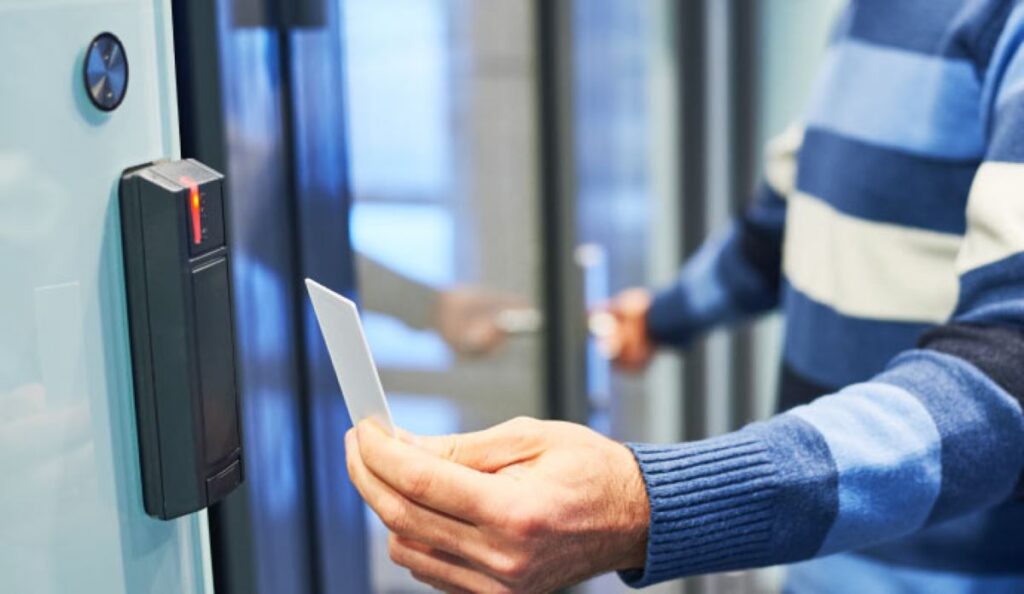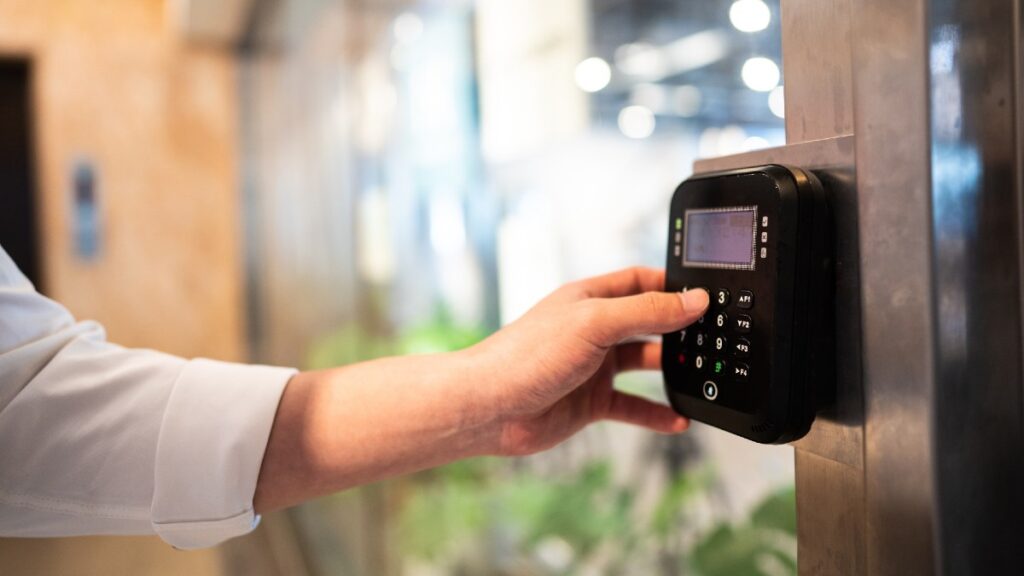In an age where security is paramount, residential access control systems have emerged as essential tools for safeguarding homes. These systems not only deter intruders but also provide homeowners with peace of mind. With a variety of options available, understanding how these systems work and their benefits is crucial for anyone looking to enhance their home security.
Understanding Access Control Systems
Residential access control systems are designed to manage who can enter a property and under what conditions. These systems can range from simple locks and keys to sophisticated electronic solutions that integrate with home automation systems. The primary aim is to restrict access to authorised individuals while keeping potential threats at bay.
Types of Access Control Systems
There are several types of access control systems available, each with its unique features and advantages. The most common types include:
- Mechanical Locks: Traditional locks that require physical keys. While they are cost-effective, they can be vulnerable to picking and unauthorised duplication.
- Electronic Keypads: These systems require a numerical code to gain entry. They offer more flexibility than mechanical locks, as codes can be easily changed.
- Smart Locks: These locks can be controlled via smartphones or other devices, allowing homeowners to grant access remotely. They often include features such as temporary access codes for guests.
- Biometric Systems: Utilising fingerprints or facial recognition, these systems provide a high level of security. They are increasingly popular in high-security environments.
How Access Control Systems Work
Access control systems operate through a combination of hardware and software. The hardware includes locks, keypads, and readers, while the software manages user permissions and logs entry attempts. When a user attempts to gain access, the system checks their credentials against a database. If the credentials are valid, access is granted; otherwise, the attempt is denied.
Modern systems often feature integration with home automation technology, allowing homeowners to monitor their property remotely. This can include receiving alerts when someone attempts to enter or when the door is left ajar.
In addition to these functionalities, many access control systems now incorporate advanced analytics to enhance security further. For instance, they can track patterns of movement within a property, identifying unusual behaviour that may indicate a security breach. This data can be invaluable for businesses, enabling them to optimise their security protocols and respond swiftly to potential threats. Furthermore, with the rise of the Internet of Things (IoT), access control systems can now communicate with other smart devices in the home, such as security cameras and alarm systems, creating a comprehensive security network that not only protects the premises but also provides peace of mind to the occupants.
Moreover, the implementation of access control systems can significantly improve operational efficiency in commercial settings. By automating entry management, businesses can reduce the administrative burden associated with issuing and tracking physical keys. Employees can be granted access based on their roles, ensuring that sensitive areas are only accessible to those who need it. This level of control not only enhances security but also fosters a culture of accountability within the organisation, as access logs can be reviewed to track who entered specific areas and when.
The Importance of Securing Entry Points
Entry points are the most vulnerable areas of a home, making them prime targets for burglars. According to statistics, a significant percentage of break-ins occur through doors and windows. Therefore, securing these points is vital for overall home security.
Common Entry Points and Their Vulnerabilities
Understanding the common entry points in a home can help homeowners take proactive measures to secure them. The most frequent entry points include:
- Front and Back Doors: Often the first places intruders target, these doors should be equipped with robust locks and, if possible, reinforced frames.
- Windows: Unlocked or easily accessible windows can provide an easy entry point. Installing window locks or security films can deter intruders.
- Garages: Many homes have garages that connect directly to the house. Securing garage doors with strong locks and access control systems is essential.
Benefits of Securing Entry Points
Investing in a comprehensive access control system offers numerous benefits, including:
- Enhanced Security: By controlling who can enter your home, the risk of unauthorised access is significantly reduced.
- Convenience: Smart locks and electronic systems provide ease of use, allowing homeowners to manage access without the need for physical keys.
- Remote Monitoring: Many modern systems allow homeowners to monitor entry points in real-time, providing alerts for any suspicious activity.
Choosing the Right Access Control System
With a plethora of options available, selecting the right access control system can be daunting. However, several factors can help streamline the decision-making process.

Assessing Your Security Needs
Before choosing a system, it’s essential to assess your specific security needs. Consider the layout of your home, the number of entry points, and the level of security required. For instance, a home in a low-crime area may not need the same level of security as one in a high-crime neighbourhood.
Budget Considerations
Budget is another critical factor when selecting an access control system. While it may be tempting to opt for the cheapest option, investing in a quality system can save money in the long run by preventing potential break-ins. It’s advisable to compare different systems and consider both initial costs and ongoing maintenance expenses.
Integration with Existing Systems
Many homeowners already have some form of security system in place. When choosing an access control system, consider how well it will integrate with existing technologies, such as CCTV cameras or home automation systems. Seamless integration can enhance overall security and provide a more user-friendly experience.
Installation and Maintenance of Access Control Systems
Once a suitable access control system has been selected, proper installation and maintenance are crucial for optimal performance. Many systems can be installed by homeowners, but professional installation may be advisable for complex systems.
Professional Installation vs. DIY
Professional installation ensures that the system is set up correctly and functions as intended. This is particularly important for advanced systems that require integration with other technologies. However, for simpler systems, a DIY approach can save money and provide a sense of accomplishment.
Regular Maintenance and Updates
Like any technology, access control systems require regular maintenance to ensure they function correctly. This includes checking batteries in electronic locks, updating software, and inspecting hardware for wear and tear. Regular maintenance can prevent malfunctions and ensure the system remains effective.
Legal and Privacy Considerations
When implementing access control systems, it’s essential to be aware of legal and privacy considerations. In Australia, privacy laws govern how personal data is collected and stored, which can include information from biometric systems.
Understanding Privacy Laws
Homeowners should familiarise themselves with the Privacy Act 1988 and any state-specific regulations that may apply. This includes ensuring that any data collected by access control systems is stored securely and used only for its intended purpose. You may like to visit https://rustydesignusa.com/how-alarm-monitoring-services-enhance-your-business-security/ to get how alarm monitoring services enhance your business security.
Informing Guests and Residents
It’s also important to inform all residents and guests about the access control measures in place. Transparency can help build trust and ensure everyone understands the security protocols that have been established.
Future Trends in Access Control Systems
The field of access control is continually evolving, with new technologies emerging to enhance security and convenience. Understanding these trends can help homeowners make informed decisions about their security systems.
Integration with Smart Home Technology
As smart home technology continues to gain popularity, access control systems are increasingly being integrated into broader home automation systems. This allows for seamless control of various home functions, from lighting to security, all from a single interface.

Advancements in Biometric Technology
Biometric access control systems are becoming more sophisticated and affordable, making them accessible to a wider range of homeowners. These systems offer a high level of security, as they rely on unique physical characteristics that are difficult to replicate.
Conclusion
Residential access control systems play a vital role in securing homes and providing peace of mind to homeowners. With a variety of options available, it’s essential to assess individual security needs, budget, and the potential for integration with existing systems. By investing in a reliable access control system and ensuring proper installation and maintenance, homeowners can significantly enhance the security of their entry points.
As technology continues to advance, staying informed about the latest trends and best practices in access control will ensure that homes remain secure in an ever-changing landscape. Ultimately, the right access control system not only protects property but also fosters a sense of safety and well-being for all who reside within.
